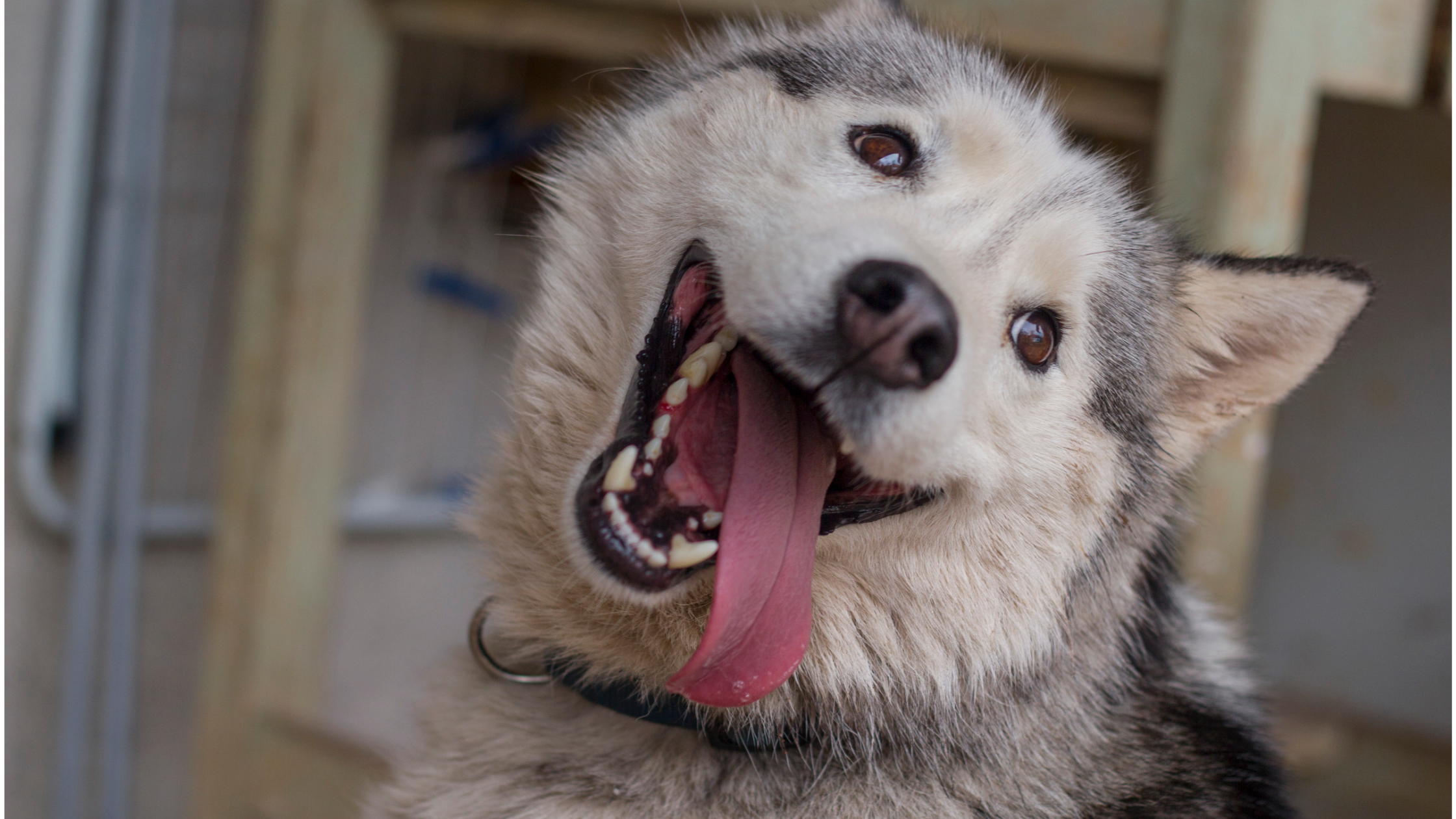Why Do Dogs Chase Their Tails?

Is your pup spinning in circles like a maniac? Don't worry, they're not losing their marbles! All they need is some mental stimulation, attention, or a good ol' energy burn. This is especially true for young pups who love to sprint in circles. So, let your furry friend go wild and embrace the tail-chasing extravaganza!
Introduction to Dog Behavior
Dogs are creatures of fascinating habits and behaviors, aren't they? Their actions often leave us puzzled, making us wonder, "What's going on inside their furry heads?"
Have you ever caught your pup in the act of tail chasing? It's a hilarious sight to behold! But the question remains: why do they do it? Let's dig into this curious canine phenomenon and unlock the secrets behind their playful pursuit.
The Curiosity of Canines
Take, for example, the peculiar habit of dogs chasing their tails. It's a sight that has left many a dog owner amused and bewildered. If you've ever wondered why dogs chase their tails, you're not alone.
Decoding Dog Tails
Tails, in the world of dogs, serve several purposes. They act as a balance tool, a communication device, and even a handy mosquito swatter.
Dogs are our faithful companions, our best friends, and our family. They're full of quirks and traits that endear them to us. But have you ever taken a moment to consider their tails? These waggling appendages are more than just an adorable accessory. In fact, they serve many important functions in a dog's life. Let's embark on a tail-tale journey and explore why dogs have tails.
The Many Roles of a Dog's Tail

Dogs' tails come in various shapes and sizes—long, short, curly, fluffy, sleek—and each one is a vital part of their body.
Communication Tool
First and foremost, dogs use their tails to communicate. Just like humans use facial expressions and body language, dogs use their tails to express their emotions. A high, stiff tail might indicate alertness or aggression, while a relaxed, wagging tail often signals happiness or excitement. A tucked tail can suggest fear or submission. So, in a way, a dog's tail is their personal language, speaking volumes about what they're feeling.
Balancing Act

Have you ever watched a dog walk along a narrow path, or turn a sharp corner at high speed while playing fetch? You might have noticed their tail working overtime during these moments. Dogs use their tails as a counterbalance to stabilize their bodies during such movements. This is especially true for breeds known for their agility and speed, like Greyhounds and Border Collies.
Swimming Aid
If you've ever seen a dog swim, you might have noticed its tail working like a ship's rudder, helping steer them in the water. Dogs that are often in water, like Retrievers and Spaniels, have long, strong tails that assist them in navigating and maintaining balance while swimming.
Warmth and Comfort
In colder climates, some dogs might use their bushy tails as a warm wrap, curling them around their bodies while sleeping for extra coziness. You'll often see this with breeds like the Siberian Husky or the Alaskan Malamute.
An Essential Part of Canine Life
So, why do dogs have tails? As we've discovered, a dog's tail is a multifunctional tool that assists in communication, balance, navigation, and even comfort. It's a crucial part of their anatomy that enhances their interactions with their environment and their communication with other dogs and humans. So the next time you see a dog wagging its tail, remember, it's not just a cute sight—it's a glimpse into the fascinating world of canine communication and functionality!
But why would a dog chase its own tail?
The Science Behind Tail Chasing
As it turns out, there are several reasons that might explain this behavior. Let's delve deeper.
Biological Reasons
From a biological perspective, dogs might chase their tails as part of their predatory instinct. A dog's ancestors in the wild had to rely on hunting to survive. This instinct can sometimes translate into chasing movements, even if the "prey" is their own tail!
Behavioral Reasons
"Tail chasing can be a way to relieve boredom and expend some excess energy," says Dr. Erin Katribe, a Texas veterinarian and medical director of Best Friends Animal Society, a non-profit animal welfare organization with a nationwide outreach.
Playfulness
Many a time, dogs chase their tails simply because it's fun! They're playful creatures, and this behavior can be a way for them to entertain themselves.
Boredom
If your dog isn't getting enough exercise or stimulation, it might resort to tail chasing out of sheer boredom. Dogs need activities to keep their minds and bodies active.
Anxiety
Sometimes, dogs chase their tails due to anxiety or stress. This could be a response to a change in their environment or routine, or even separation anxiety.
Health-Related Reasons
Physical Health Issues
Physical health issues, such as allergies, parasites, or skin conditions, can also lead dogs to chase their tails. Tail-chasing can also occur when the dog itches around the rear end due to fleas or food allergies. If a dog has an itch or irritation that it can't reach, it might try to solve the problem by chasing its tail.
Mental Health Issues
In some rare cases, tail chasing can be a sign of a neurological or psychiatric condition, like obsessive-compulsive disorder (OCD).
How to Respond to Tail Chasing
When to Be Concerned
Occasional tail chasing is usually harmless. However, if your dog is chasing their tail frequently or seems distressed while doing so, it might be time to take action.
Consultation with a Vet
If you notice excessive tail chasing, the first step is to consult with a vet. They can help determine if there's a physical cause behind the behavior.
Training and Distraction Techniques
Providing plenty of exercises and mental stimulation can help prevent tail chasing due to boredom. Engaging your dog in interactive games, teaching them new tricks, or even giving them puzzle toys can keep their minds occupied and reduce the likelihood of tail chasing.
In the case of anxiety-induced tail chasing, you might need to identify the source of the stress and address it. This could involve maintaining a stable routine, providing a safe space for your dog, or seeking help from a professional dog trainer or behaviorist.
Conclusion
Dogs are wonderfully complex creatures, and their behaviors can be just as complex. Tail chasing can range from a playful quirk to a sign of underlying health issues. As pet owners, our responsibility is to keep a watchful eye on our dogs and ensure they're healthy and happy. So, next time you see your dog chasing its tail, remember, it's not just a silly game—it's a window into the fascinating world of canine behavior!
FAQs
Q: Is it normal for dogs to chase their tails?
A: Yes, it's normal for dogs, especially puppies, to chase their tails as part of their playful behavior or curiosity. However, excessive tail chasing can be a sign of an underlying issue.
Q: What should I do if my dog won't stop chasing its tail?
A: If your dog won't stop chasing its tail, it's a good idea to consult with a vet. They can help identify if there's an underlying health or behavioral issue causing this behavior.
Q: Can tail chasing be a sign of a medical problem?
A: Yes, tail chasing can sometimes be a sign of medical problems like allergies, skin conditions, or even neurological disorders. If you're concerned, it's best to seek advice from a vet.
Q: Can I train my dog to stop chasing its tail?
A: Yes, training and distraction techniques can often help reduce tail chasing. However, it's important to first rule out any underlying health issues with the help of a vet.
Q: Is tail chasing more common in certain breeds?
A: Yes, some breeds are more prone to tail chasing than others. This includes breeds like German Shepherds and Terriers, which have high prey drives.
Q: Do all dogs have tails?
A: While all dogs are born with tails, some breeds have their tails docked for various reasons, including historical working purposes or breed standards. However, this practice is considered controversial and is banned in many places.
Q: Why does my dog wag its tail?
A: Dogs usually wag their tails as a form of communication. It can express a variety of emotions, from happiness and excitement to anxiety or even aggression, depending on the tail's position and speed.
Q: Can a dog's tail get tired from too much wagging?
A: While it's rare, dogs can suffer from a condition known as "limber tail," which usually occurs after intense activity or exposure to cold water. This condition causes the tail to hang limp, but it's temporary and usually resolves within a few days.
Q: Why does my dog tuck its tail under?
A: A tucked tail usually indicates fear, anxiety, or submission in dogs. It could be a response to a stressful situation or an unfamiliar environment. If your dog is frequently tucking its tail, it's essential to identify and address the underlying cause of its stress.
Q: Do dogs have control over their tail movements?
A: To a certain extent, yes. Dogs can control their tail movements, and they use them purposefully to communicate their feelings and intentions. However, some tail movements can also be involuntary reactions to their emotional state, similar to how humans might smile instinctively when happy.













